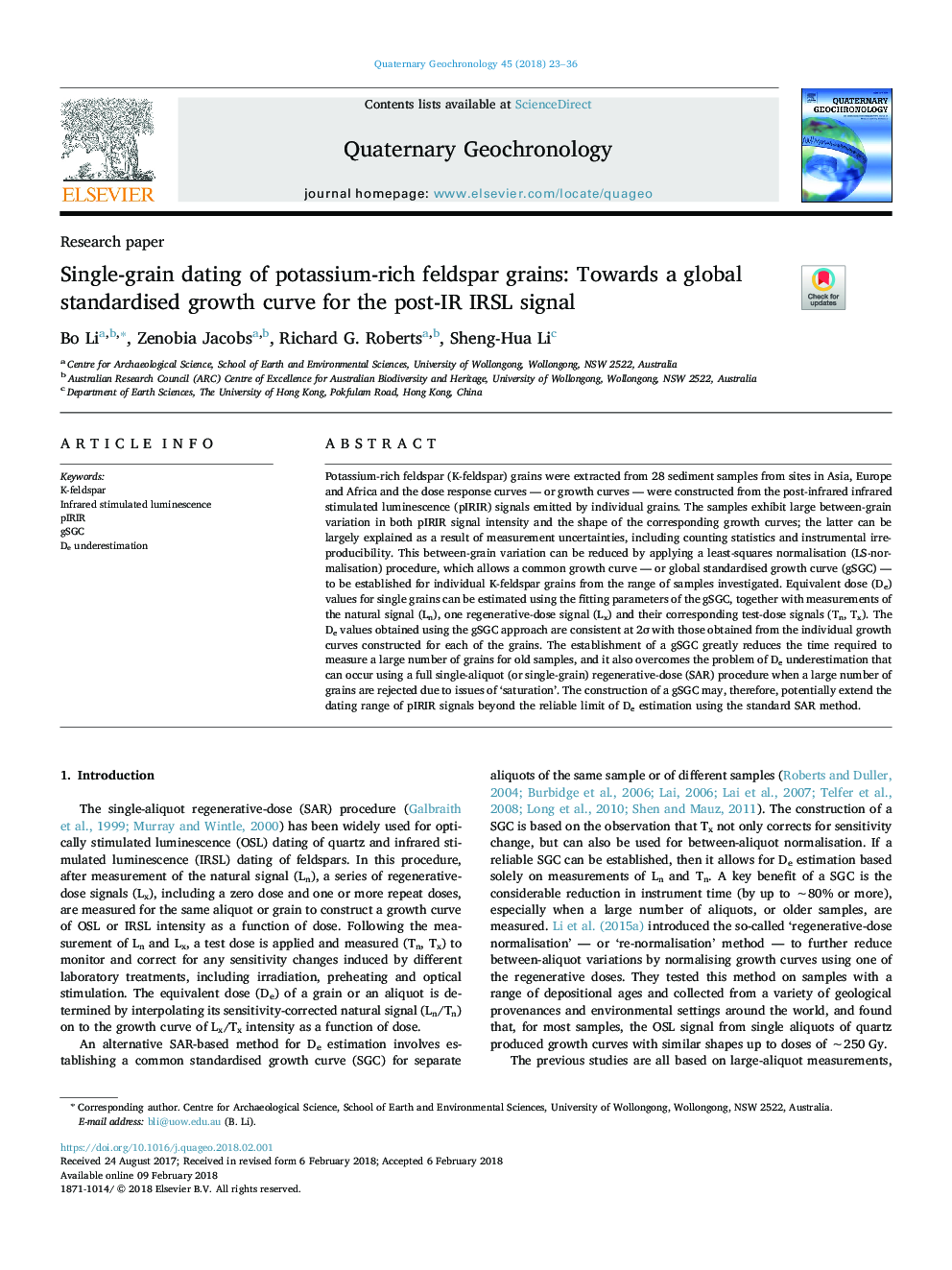| Article ID | Journal | Published Year | Pages | File Type |
|---|---|---|---|---|
| 8912817 | Quaternary Geochronology | 2018 | 14 Pages |
Abstract
Potassium-rich feldspar (K-feldspar) grains were extracted from 28 sediment samples from sites in Asia, Europe and Africa and the dose response curves - or growth curves - were constructed from the post-infrared infrared stimulated luminescence (pIRIR) signals emitted by individual grains. The samples exhibit large between-grain variation in both pIRIR signal intensity and the shape of the corresponding growth curves; the latter can be largely explained as a result of measurement uncertainties, including counting statistics and instrumental irreproducibility. This between-grain variation can be reduced by applying a least-squares normalisation (LS-normalisation) procedure, which allows a common growth curve - or global standardised growth curve (gSGC) - to be established for individual K-feldspar grains from the range of samples investigated. Equivalent dose (De) values for single grains can be estimated using the fitting parameters of the gSGC, together with measurements of the natural signal (Ln), one regenerative-dose signal (Lx) and their corresponding test-dose signals (Tn, Tx). The De values obtained using the gSGC approach are consistent at 2Ï with those obtained from the individual growth curves constructed for each of the grains. The establishment of a gSGC greatly reduces the time required to measure a large number of grains for old samples, and it also overcomes the problem of De underestimation that can occur using a full single-aliquot (or single-grain) regenerative-dose (SAR) procedure when a large number of grains are rejected due to issues of 'saturation'. The construction of a gSGC may, therefore, potentially extend the dating range of pIRIR signals beyond the reliable limit of De estimation using the standard SAR method.
Related Topics
Physical Sciences and Engineering
Earth and Planetary Sciences
Geochemistry and Petrology
Authors
Bo Li, Zenobia Jacobs, Richard G. Roberts, Sheng-Hua Li,
